Tomorrow 15 January it will be
exactly 49 years ago when Charles Manson puts a nation on trial. Also
keenly timed to the 50th anniversary of the series of murders in Quentin
Tarantino’s new film, “Once Upon a Time ... in Hollywood,” characters bump up
against the Manson “family” of Charles and his followers and their legend. But
contrary to popular belief while Manson’s cult arose out of San Francisco’s
predatory hippie culture and ended in the shadow of Hollywood, the murders had
nothing to do with the occult or were a countercultural revolt, they
were about diverting attention from an earlier killing.
In Once Upon a Time
... in Hollywood, the new film from director Quentin Tarantino, an actor, and
stuntman (played
by Leonardo DiCaprio and Brad Pitt, respectively) find themselves living
next door to beautiful actress Sharon Tate. It’s the summer of 1969, and what
none of the characters know is that Tate and five others will soon be brutally
murdered by members of the Manson Family, the cult led by Charles Manson that
would become, for many, the ultimate symbol of the dark side of the 1960s.
Ostensibly, Manson
ordered his followers to commit the Tate-LaBianca murders because he was trying
to jump-start what he purported to believe would be the coming race war between
the government and black citizens, in particular, the Black Panthers, whom he
hated. Manson had dubbed this movement Helter
Skelter, preaching that the Beatles’ White Album song of the same name,
which was written about an amusement park, was about the forthcoming war.
Throughout the summer of 1969, Manson had been hinting to his followers that if
black Americans didn’t start Helter Skelter, the Family should help it along.
But Manson also
wanted to distract the law from other crimes. In May 1969, he had non-fatally
shot a drug dealer named Bernard “Lotsapoppa” Crowe
after a dispute over a drug payment. Two months later, Manson had urged several
of his followers to steal money from a friend of his named Gary Hinman. After
two days of holding Hinman hostage, during which Manson cut Hinman’s ear,
Manson follower Bobby Beausoleil killed Hinman.
The Family members
attempted to blame Hinman’s death on the Black Panthers by writing “Political
Piggie” and a Black Panther symbol in blood on the wall. But Beausoleil was
arrested for the murder and taken into custody on August 6.
Manson now feared that
Beausoleil would crack under pressure while being interrogated and implicate
Manson in the murder of Hinman and the previous shooting of Crowe. Two other
Manson Family members, Mary Brunner and Sandra Good were also arrested at the
same time for using a stolen credit card. Their bail was only $600, but their
arrest, combined with Beausoleil’s, was enough to send Manson into a rage
spiral.
Just two days after
Beausoleil was taken into custody, on August 8, 1969, Manson ordered his
right-hand man, Charles “Tex” Watson, to take three members of the Family to
the Cielo Drive address.
Multiple Manson
Family members generally claimed that Manson himself never came up with the
idea of murdering rich Hollywood “piggies”, that this idea originated from
group conversations while Manson wasn’t even present. But during Mansion’s
trial, Watson claimed Manson told him to go to Melcher’s former house on Cielo
drive and “totally destroy” the current inhabitants.
Manson’s goal was to
have his followers kill everyone at the house and make the killings look like
the Hinman killing, in order to divert police suspicion from the captive
Beausoleil.
Underneath Bobby
Beausoleil in 1970, immediately after his sentencing for the death of Gary
Hinman. Testifying at a different trial two years later, Beausoleil told the
court, “I’m
at war with everybody in this courtroom. It’s nothing personal ... you better
pray I never get out.”

Los Angeles
prosecutor Vincent Bugliosi claimed in his book Helter Skelter that Manson
further wanted to unnerve Melcher in retaliation for Melcher’s refusal to help
him advance his music career.
Whatever the motive,
the Family’s total victim count stands at 12, and possibly higher.
The Manson murders: the victims
Victims prior to the
Tate-LaBianca murders:
Bernard “Lotsapoppa” Crowe: Crowe was an LA drug dealer who
threatened to wipe out the Manson Family after Tex Watson defrauded him. In
response, Manson went to Crowe’s apartment on July 1, 1969, and shot him.
Manson believed he had killed Crowe, but Crowe survived and never reported the
shooting to the police. Prosecutor Vincent Bugliosi tracked him down, however,
and he testified at Manson’s trial, which, according to Bugliosi, was the first
time Manson realized he was still alive.
Gary Hinman: Born in
Colorado, Hinman was a Buddhist music teacher pursuing a doctorate in sociology
at UCLA when he became roommates with Bobby Beausoleil. The two met Charles
Manson in 1968, and Beausoleil became the primary perpetrator of Manson’s orders
to attack Hinman in July 1969. The Manson Family inexplicably believed Hinman
had come into a large sum of money; in fact, at the time of his death at age
33, he reportedly
had just $50 in his bank account.
Victims at the Tate
residence:
Abigail Folger: The
26-year-old heiress to the Folgers Coffee fortune, Folger hadn’t simply rested
in the lap of her luxury. She graduated from Harvard
with a master’s degree in art history and worked for a time at a Berkeley art
museum before moving to LA in 1968. Once there, she threw herself into
activism, doing volunteer social work for an urban welfare program and working
for a racially charged city council campaign. She and her boyfriend, Wojciech Frykowski, spent most of the spring and summer of 1969
house-sitting for Roman Polanski and his wife Sharon Tate at 10500 Cielo Drive.
Even though Tate returned from overseas work at the end of the summer, Polanski
invited Folger and Frykowski to keep living there
through August. So they were all hanging out in the house together on the night
of August 8, 1969.
Wojciech Frykowski: Frykowski grew up in
Poland and studied chemistry. He became bar buddies with Roman Polanski while
hanging around film studios in Łódź. He worked as a
lifeguard on Polanski’s first film, Knife in the Water, and ultimately moved to
California, where he met girlfriend Abigail Folger. In Polanski’s
autobiography, Roman by Polanski, the filmmaker reportedly
described Frykowski as “good-natured, softhearted to
the point of sentimentality, and utterly loyal.” He was 33 the night of the
Tate murders.
Steven Parent:
18-year-old Steven Parent graduated from high school two months before his
death at the Tate-Polanski residence. A native of Los Angeles, he loved music
and playing the guitar. He was working two jobs over the summer to pay for his
enrollment in a community college in the fall; to supplement his income, he
tried to sell small electronics and mechanical devices to friends, including
his friend William Garretson, who worked as the caretaker of 10500 Cielo Drive.
Parent visited Garretson at the house the night of August 8 in order to try to
sell him a small clock; through total bad luck, he was driving out of the gated
residence the moment the Manson Family members entered. Though he reportedly
pleaded for his life, Tex Watson shot him four times.
Jay Sebring: A
Birmingham, Alabama, native and a Korean War Navy veteran, Sebring became a
celebrity hairstylist during the ’60s by importing many European fashion trends
to Los Angeles, tricks like the then-astonishing tactic of shampooing men’s
hair before styling it. He did hair for several movies and is credited
with designing Jim Morrison’s iconic hairstyle as well as inventing the
entire men’s hair industry. His salon grew into an international hair company
before his death. Through the mid-’60s, he and Sharon Tate were extremely
close, first dating and remaining best friends. Sebring was 35 years old when
he was killed at 10500 Cielo Drive.
Sharon Tate: A Texas
pageant girl and Army brat, Tate broke into acting while attending high school
in Italy. She’d already made a name for herself as a fashion model and comedic
actress by the time she married Roman Polanski in January 1968. Now a cult classic,
1967’s Valley of the Dolls established the typical media response to her
performances, which tended to fixate on her sex appeal while mocking her acting
ability. Still, Tate’s role in the film garnered her a Golden Globe nomination,
and Polanski always believed in her talent. A short film made about her in 1965
described her as “today’s kind of girl [...] bursting with youth, beauty,
vitality, and hope.” She was 26 at the time of her death.
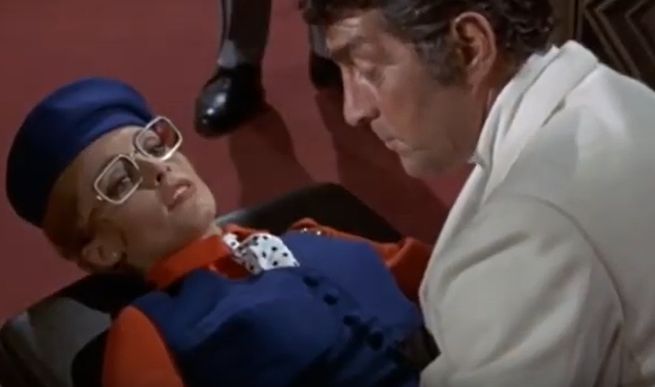
The LaBianca murders:
Leno LaBianca: The
son of Italian immigrants, LaBianca was a brilliant student who married his
high school sweetheart before serving in Europe during World War II and
becoming a sergeant first class in the Army Reserve thereafter. Though he
fathered three kids, his first marriage disintegrated after the war. In 1959,
he married again in a Vegas wedding to Rosemary LaBianca, and though her kids
lived with them in their house on Waverly Drive, the children were with friends
out of town the weekend of the murders. Leno LaBianca died alongside his wife
on August 10, 1969, just days after his 44th birthday.
Rosemary LaBianca:
Rosemary grew up in Arizona and moved to Los Angeles sometime in the 1940s,
during her late teens. Her first marriage resulted in two children but ended in
divorce, and she turned her attention to business; on the profits of a mobile dress
shop she invented, she became a self-made millionaire and wealthy investor. In
1959, she married Leno LaBianca, and in 1968, the pair moved into his childhood
home on Waverly Drive, in what was intended to be a temporary living
arrangement. She was killed by the Manson Family on August 10, 1969, at age 40.
Later victims:
Donald “Shorty” Shea:
The last murder Manson ordered while living at Spahn Ranch was that of “Shorty”
Shea, a ranch employee who clashed with Manson several times. After the
Tate-LaBianca murders, Manson became convinced that Shea was a police informant
and ordered several members of the Family to kill him. Shea was beaten and
stabbed to death on August 28, 1969. He was 36.
James and Lauren
Willett: James Willett was a Vietnam veteran who served in the Marines. In
1972, the year after the Manson trial, he and his wife, Lauren “Reni” Willett,
became friends with several members of the by-then scattered Manson Family.
James was 26 years old at the time he vanished; his body was later found more
than 100 miles away from that of his wife. Authorities believed
Reni had traveled with the group for months after her husband’s death, possibly
to ensure her safety and that of her infant daughter. It didn’t work; she was
found buried beneath the house where the group was living. She died at the age
of 19; her daughter was still with the group when they were apprehended and was
taken
in by relatives.
Other deaths with
strong but unconfirmed connections to the Manson Family:
Mark Walts:
16-year-old Mark Walts wasn’t a Family member, but he was a frequent guest at
Spahn Ranch and a known friend of many Family members. Though the Family was
reportedly “shocked”
by Walts’s murder on July 17, 1969, Walts’s brother was convinced that Manson
was responsible for his death, and called Manson in order to directly accuse
him. The Los Angeles Sheriff’s Department investigated the Mansons and other
Spahn Ranch inhabitants in regard to Walts’s murder, but the case remains
unsolved.
John Philip “Zero”
Haught: Haught, an Ohio native, had moved to California with a friend in the
late ’60s and met Manson in the summer of 1969. He joined the Manson Family and
was among the group who was arrested in the October raid of the clan for the Tate-LaBianca
murders; Manson may have suspected him of being an informant.
On November 5, 1969,
Haught was hanging out with some of the Family, including Bruce Davis, who’d
been involved in killing Donald Shea on Manson’s orders two months before.
According to all the other Family members present, Zero suddenly found a gun in
the room, picked it up, and promptly shot himself while attempting a game of
Russian roulette. The problem? According to Jeff Guinn’s book Manson, when
police investigated the death, they found that the gun, rather than having zero
bullets and one spent shell casing, instead contained seven bullets and one
spent shell. Moreover, the gun had been wiped free of prints. Despite this,
police concluded Haught had killed himself. He was 22 years old.
Reet Jurvetson:
Jurvetson was an Estonian refugee whose family fled to Canada to escape Soviet
oppression during World War II. She moved to Los Angeles in 1969 and was killed
just a few months later, around November 15, 1969. Jurvetson’s body remained
unidentified for nearly 35 years, during which time she was identified only
as “Jane Doe No. 59.” Advances in DNA technology ultimately allowed her body to
be identified and her family notified in
2003.
Underneath a picture
of Jurvetson:

Authorities have
always suspected a link between Jurvetson’s murder and the Manson Family, due
to the proximity of her body to the location of the Tate murders and the widely
held belief that the unknown woman was a friend of the Manson Family. Moreover,
the proximity of her time of death to the death of Family member John Haught,
whose death was also strongly suspected to have come on the orders of Manson,
led to speculation that Jurvetson was murdered because she witnessed his death.
She was 19 when she died.
The murders, the trial, and the crimes that followed
The members of the
Manson Family are extremely numerous; at its peak, the group consisted of about
100 casual followers and 30 core members. For the full rundown of significant
Manson associates, Los Angeles prosecutor Vincent Bugliosi, who prosecuted the
Manson Family murders, co-wrote perhaps the definitive book on the subject:
1974’s Helter Skelter. Much of the research for this article was also based on
Ed Sanders’ The Family (the first book written about the Mansons), and Manson:
The Life and Times of Charles Manson, by Jeff Guinn, as well as taken from
transcripts of the Manson trials and archival news reports from the Los Angeles
Times and other publications; many of these are archived on the website Cielo Drive, which features a wide array
of historical media reports.
On August 8 and 9,
1969, Tex Watson took Manson followers Patricia Krenwinkel, Susan Atkins, and
Linda Kasabian to the house on Cielo Drive, where all of them, except Kasabian,
who was horrified — proceeded to kill Tate and four guests: Jay Sebring, Abigail
Folger, Wojciech Frykowski, and Steven Parent, an
18-year-old who just happened to be leaving the property as they were entering.
As Beausoleil had done after killing Hinman, they wrote “Pig” on the door in
blood, in an attempt to tie the killings to Hinman’s murder and implicate the
Black Panthers.
“The Manson Girls”
Three Manson women
participated in the most notorious acts of Manson Family violence, the
Tate-LaBianca murders. Susan Atkins, a.k.a. “Sexy Sadie,” and Leslie Van Houten
each sought to escape their dysfunctional nuclear families in California’s
counterculture. Patricia Krenwinkel was a former bullied teen who worshiped
Manson and later described her life with him as idyllic.
On August 8, 1969,
Manson ordered Atkins, Tex Watson, Patricia Krenwinkel, and Linda Kasabian (who
did not participate in the killings) to the Tate residence. Atkins was partly
responsible for the vicious killing of Sharon Tate, and she often bragged about
ignoring Tate’s pleas for life. Afterward, she wrote on the walls in Tate’s
blood. Krenwinkel gleefully boasted about murdering Abigail Folger at the
scene, and the next night, she, Watson, and Van Houten also killed the LaBiancas.
During the Manson
trials, all three women were visibly and vocally remorseless, and all three
were sentenced to death in 1971; these sentences were commuted to life in 1972.
In prison, Atkins became a model prisoner, married twice, taught other inmates,
and launched controversial lobbies for parole. Though much of the public
supported her bids for release, particularly as her health deteriorated with
age, all her parole requests were denied. At the time of her death in 2009,
she’d been in prison longer than any woman in California history. Following her
death, that distinction passed to her fellow inmate Krenwinkel, who was most
recently denied parole in 2017.
Linda Kasabian:
Born in small-town
Maine, Kasabian was a high school dropout and troubled teen bride. By age 20,
she was already on her second marriage and had given birth to two children when
she met Manson through her friend Gypsy Share at Spahn Ranch in 1969.
Though she
participated in petty theft and other criminal acts while in the cult, Kasabian
tried to prevent the Manson murders from taking place. On the night of August
8-9, she acted as the “lookout” in order to avoid participating in the Tate
murders. On the next night, August 10, she thwarted Manson’s attempt for the
Family to commit yet a third home invasion and possible set of murders by
deliberately knocking on the door of the wrong house and screwing up the plan.
She testified for the prosecution in the Manson trial in the face of serious
intimidation by Manson and his fellow defendants, who would visibly threaten
her while she spoke. Several of the defendants subsequently accused Kasabian in
court of masterminding all the murders. Following the trials, Kasabian moved to
New Hampshire and has lived quietly ever since. She’s currently 70 years old.
The next night,
August 10, Manson directed these followers, plus Leslie Van Houten and Steve
“Clem” Grogan, to a house owned by Leno and Rosemary LaBianca, who were wealthy
but far from the Hollywood elite. (Kasabian managed to thwart more violence
planned for another residence in another part of the city.) Manson directed and
participated in the binding of the couple but left his followers to commit the
violence. After killing the pair, the Family members once again wrote chilling
phrases on walls in blood, including “Helter Skelter.”
Underneath Susan Atkins with attorney Richard
Caballero:
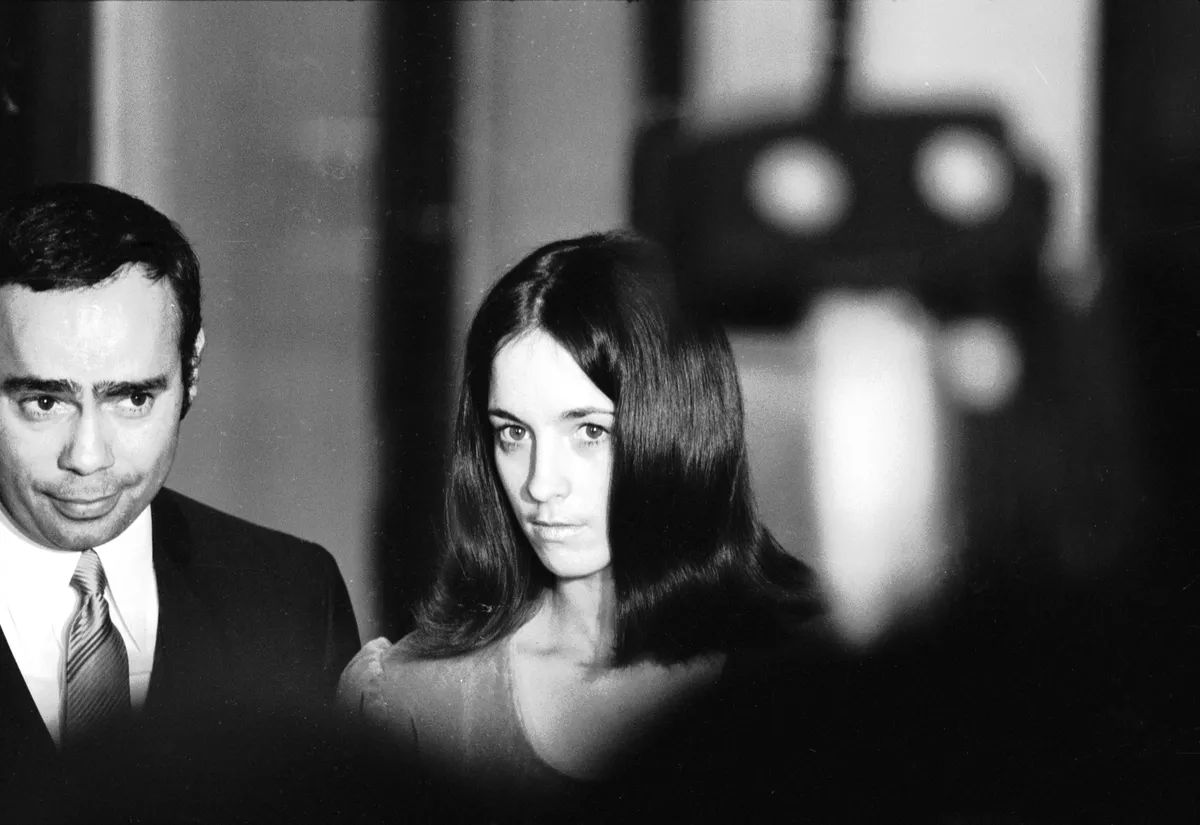
Those messages made
both the Tate murders and the LaBianca murders seem occult, a product of grand
evil. That impression lingers today, although the murders were practically just
a red herring — all a plot to make sure Beausoleil was released before he could
implicate Manson for his crimes. And even this plan went horribly awry.
These days, the
Tate-LaBianca murders are always mentioned as connected. But at the time they
occurred, LA police shrugged off the idea of a link between the crimes, despite
the identical messages scrawled on the walls in blood. Although police raided
the Manson Family at Spahn Ranch shortly after the murders, it was on suspicion
of car theft. The Family was quickly released, and Manson relocated to Barker
Ranch at Death Valley. Before they left Spahn Ranch, however, Manson ordered
yet another killing, the August 26 murder of Donald Shea, a ranch hand whom
Manson blamed for informing on him about the stolen cars to police.
The
Spahn Movie Ranch in San Fernando Valley, California, where convicted
murderer Charles Manson and his followers lived from mid-1968 until their
arrest in October 1969.
In October 1969, many
members of the Family, including Manson, were arrested — again, not for the
Tate or LaBianca murders, but for stealing RV equipment. But by this point, the
police who were investigating the LaBianca murders had finally connected the
dots between the two murders and linked them back to the murder of Hinman and
Manson’s involvement in it. On December 1, police issued warrants for the five
main participants in the Tate-LaBianca killings: Manson, Watson, Atkins,
Krenwinkel, and Van Houten.
A sensationalized
1971 trial followed, characterized by disruptive
outbursts from Manson and his supporters inside the courtroom and protests from
Manson supporters outside — even an
exploding courthouse bomb, which thankfully injured no one. (Police never
confirmed a link between the bomb and Manson, though it was placed directly
beneath the courtroom during the trial.) Ultimately, Charles Manson was
convicted on seven counts of first-degree murder for the Tate-LaBianca
killings, later followed by two more convictions for the deaths of Hinman and
Shea, the Spahn ranch hand. Manson, Watson, Atkins, Krenwinkel, and Van Houten
were all sentenced to death, though their death penalties were commuted to life
sentences the following year with the abolishment of the death penalty in the
state of California.
Members of the Manson
Family, including Lynette
Fromme and Ruth Ann Moorehouse, sitting outside the Los Angeles Hall of
Justice during the Manson’s trial:
Though the public
moved on after the trials, the scattered members of the Manson Family did not,
and throughout the early ’70s, they continued to resort to violence and various
levels of crime, from petty to dramatic. On August 21, 1971, Manson Family members
Mary Brunner, Catherine “Gypsy” Share, Dennis Rice, Charles Lovett, Larry
Bailey, and Kenneth Como raided an Army surplus store in southwest LA. The
group frantically stockpiled weapons while holding customers and employees
hostage, and then became embroiled
in a shootout with police that resulted in Brunner and Share being wounded.
Authorities believed their ultimate plan was to hijack a plane in order to
ransom the captives for the release of the imprisoned Family members.
During and after the
Manson trial, other members of the Family began a stint of petty crime,
including robbery and identity theft. The group included Lynette “Squeaky”
Fromme and several couples: Michael Monfort and Nancy Pitman, James “Spider”
Craig and Priscilla Cooper, and Maria Theresa “Crystal” Alonzo and her husband,
a white supremacist named Bill Goucher. In 1971, the group befriended another
young couple named James and Lauren Willett; later, both were later found
murdered, due to the group’s suspicion
that James Willett might inform on them. In 1972, all the group’s members
except for Alonzo and Fromme were convicted or pleaded guilty to the double
murders. The Willetts’ infant daughter survived.
Alonzo, who had
actually become a Manson follower after his arrest, was detained but not
charged for the Willett murders; two years later, in 1974, she was instead
convicted in a bizarre
plot to kidnap a foreign consul and hold them for ransom in exchange for
freeing two prison inmates. Her current whereabouts are unknown, and one
report suggests she died in 1985 in California, at the age of 33.
By far the most
notorious nonlethal crime committed by a Manson Family member didn’t occur
until the middle of the following decade. On September 5, 1975, still-loyal
Manson supporter Fromme attempted to assassinate President Gerald Ford during a
public appearance in Sacramento. Fromme aimed a loaded Colt .45 at the
president, but the gun didn’t fire, and investigators later realized there was
no round in the chamber.
Lynette “Squeaky”
Fromme leaving court during her trial for the attempted assassination of
President Gerald Ford in 1975. Her red robe is the same one she wore during the
incident. She was sentenced to life in prison but was ultimately released on
parole in 2009. She
is now 70 years old.
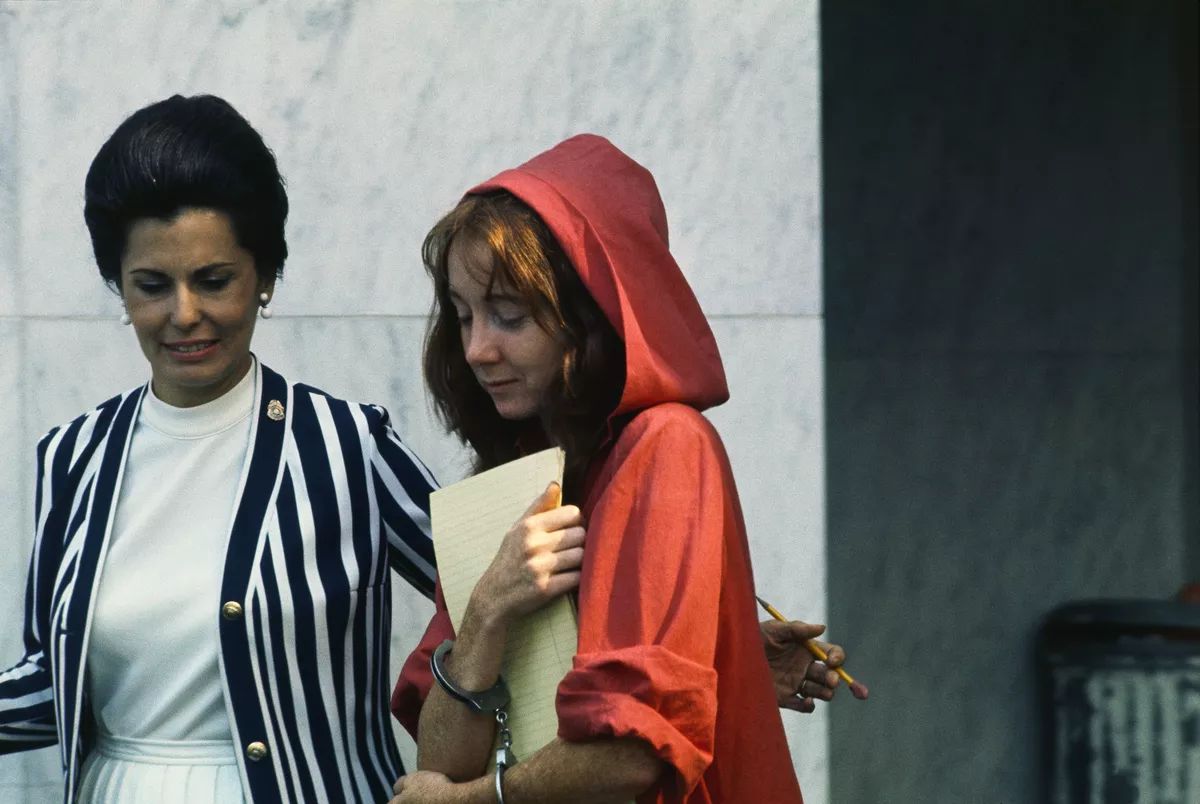
Fromme had originally
wanted to assassinate the previous president, Richard Nixon, because he had
presided over the Manson trials and had drawn Manson’s particular enmity before
his incarceration. But after Nixon’s resignation, Fromme transferred her presidential
fixation to Nixon’s successor. For her crime, she was sentenced to life in
prison but was released in 2009 at age 60, after which she became a friendly
but reclusive real estate agent in upstate New York.
A 2012 article on
Fromme’s post-prison life suggested
she remains loyal to Charles Manson.
Manson was more of a cultural and Hollywood insider
than his legacy would sugges, and more of an ordinary
misogynist
The lasting cultural impression
Manson has left is that of a rogue element, a horribly defective product of San
Francisco’s hippie counterculture. But that impression is inaccurate. Far from
being a cultural outsider, Manson regularly hobnobbed with Hollywood royalty.
And he wasn’t a hippie, but a con man who deliberately appropriated the
trappings of hippie culture, mainly to manipulate vulnerable women caught up in
the countercultural lifestyle, and then use those women to further manipulate
his way into positions of power and influence.
Manson Family members and murder suspects Susan
Atkins, Patricia Krenwinkel, and Leslie Van Houten:
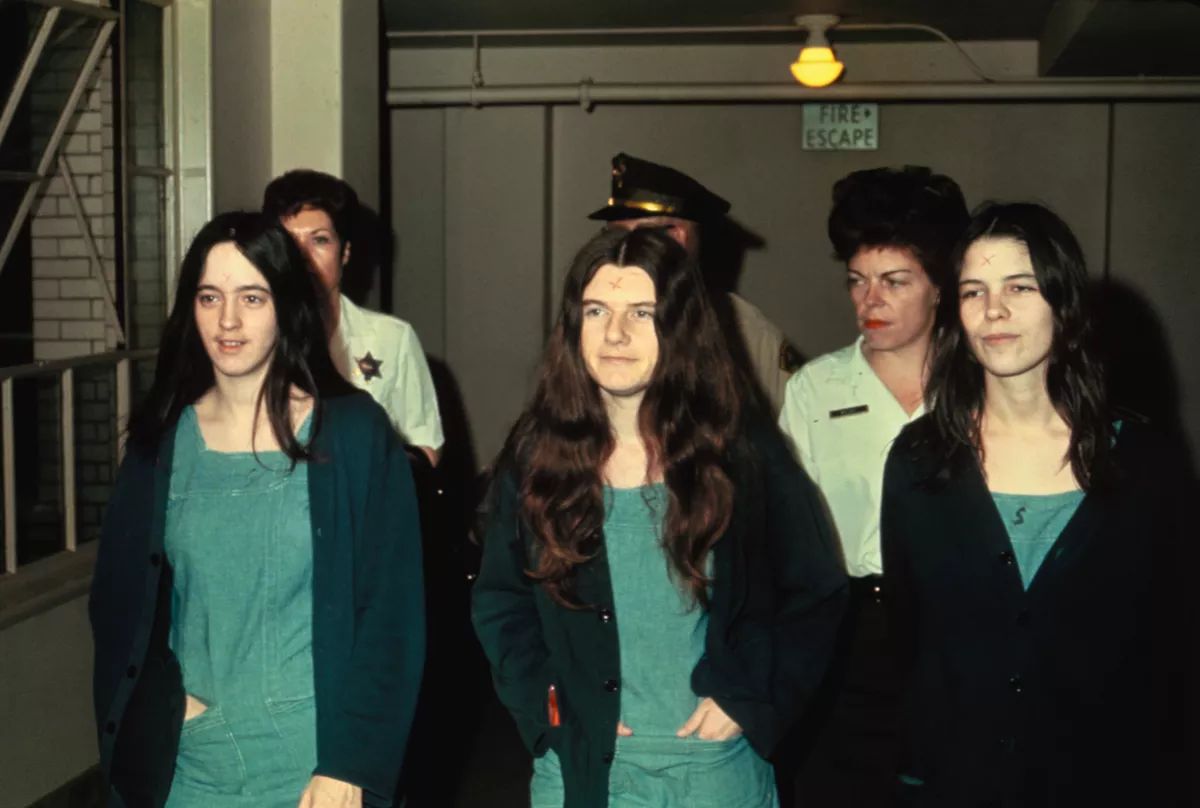
Manson routinely
relied on the devotion of his female followers to gain power, either through
their direct labor on his behalf or through their willingness to trade sexual
favors to whomever Manson wanted, for whatever Manson wanted for himself. And
many of them are still serving time in jail as a result: Atkins died in prison
in 2009; Van Houten was recently denied
parole. Patricia Krenwinkel is the longest-serving female inmate in
California. Male followers Tex Watson and Bruce Davis also remain in prison;
Davis, 76, was approved
for parole in June 2019, but his release will likely be blocked by
California Gov. Gavin Newsom, who, like all of his predecessors, has blocked
every motion for release for all the Manson family members.
Manson himself
maintained the public’s ongoing interest while he was in prison due to his wild
and erratic commentary and behavior behind bars. He joined the white
supremacist group Aryan Brotherhood and was a perpetually
disruptive prisoner, with female officers bearing “the brunt of his verbal abuse.”
As a fringe prophet spouting apocalyptic racism who was nonetheless still
somehow able to exert a fascinating hold over his followers old and new, he
brought cults and their destructive tendencies into modern public
consciousness.
Bugliosi spoke
of Manson in mythic terms in 2014: “The name Manson has become a metaphor
for evil, and there’s a side of human nature that’s fascinated by pure
unalloyed evil.”
But this narrative of
Manson has thankfully diminished over time, and given way to the truth: that beneath
all his theatrics, his bizarre ramblings, his googly-eyed camera-hogging, and
his violent outbursts, Manson’s evil wasn’t outsize, occult, or supernatural.
He was an average, everyday narcissist who practiced social engineering and
learned to use the bodies of willing women around him as a bargaining tool.
His rise to
prominence and the violence he engendered says more about the complicated
moment in which he moved, and the gender and social roles he exploited, than
his special talents as a master manipulator. Manson’s power was built not on
his own abilities but on the bodies, sacrifices, and ravaged souls of the
people he took into the Family, long before they began to kill for his sake.
Charles Manson in
2017 died
of cardiac arrest and respiratory failure in the hospital on November 19.
In the end, one man
even claimed to be Manson's
illegitimate son while another produced a will making him the sole
beneficiary.
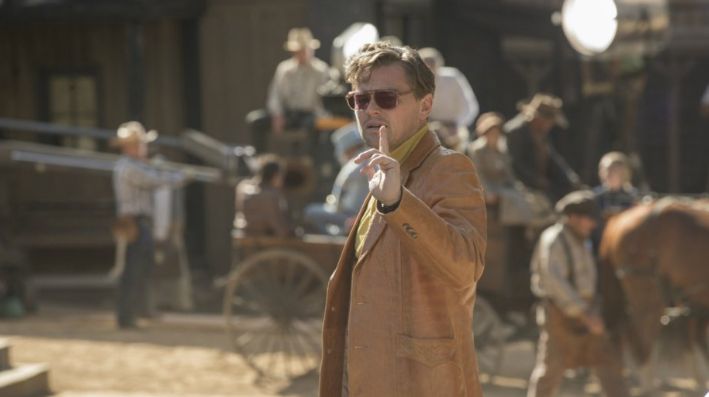
For updates click homepage here